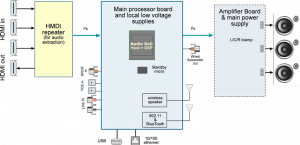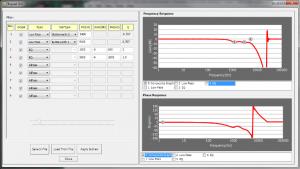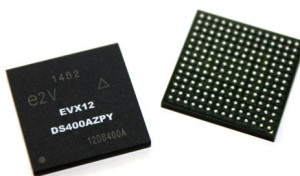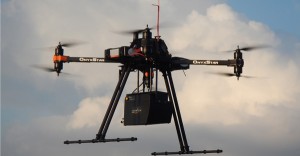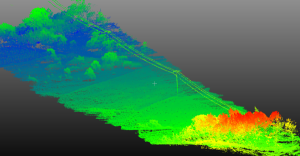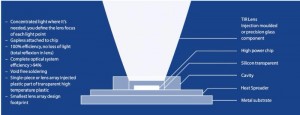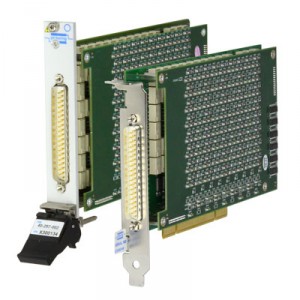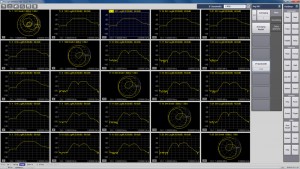Active soundbars with an ARM processor and DSP can make your streamed and compressed music files sound like high quality audio, writes Brewster LaMacchia.
As TVs have gotten flatter their cabinet volumes have reduced; the laws of physics dictate that their sound quality has gotten worse.
Active soundbars, which combine the features of a traditional A/V Receiver for multichannel sound with a dedicated set of speakers, have become popular as a way to provide a surround sound experience with TV and movie viewing. (See Figure 1)
They use a digital signal processor (DSP) device to decode multichannel audio, optimise the sound for the particular transducers/drivers, and apply psycho-acoustic processing to create a wider soundstage than the bar itself.
A critical feature in a high quality soundbar is bass management. Due to the small cabinet volume and limited driver size, reproduction of frequencies below 150Hz starts to become a difficult design problem.
To avoid the need for all speakers to reproduce down to the typical lower audio limit of 20Hz, surround systems (and some stereo systems) redirect bass energy from each channel to a dedicated subwoofer. This works because human hearing is non-directional at these lower frequencies.
Correctly creating the crossover filter to preserve both time and frequency domain performance when attached to real world drivers is a difficult problem with many advocates for differing methods.
In the same way that class D amplifiers have made small volume subwoofers possible (by throwing lots of amplifier power at it with limited heat generation compared to traditional class AB amplifiers) soundbars too can benefit.
However this approach to solving the output level problem does require physically small drivers that can handle high (25W – 50W) power levels. Here the DSP can be used to perform intelligent dynamic range compression to achieve the desired loudness with minimal distortion and protect the driver from long term over-heating.
For example, in a recently completed prototype, an existing retail passive soundbar was used as stand-in for the final cabinet and drivers so that software developers would be able to listen to the results with actual audio content and not just view test tones on an oscilloscope. The passive crossovers were removed from the purchased soundbar and electronic ones created in the amplifier ICs (TAS5727 I2S input class D amplifier ICs from Texas Instruments in this case).
The onchip DSP core performs content decoding, bass management and other post processing. Initial listening to the bar produced a sound quality that was lacking for vocals and bass that sounded out of balance with the rest of the system.
Modifying bass management, and tweaking the electronic crossover settings between the mid-woofer and tweeter, as well as a small correction in the 1.2 kHz and 3kHz area produced a sound quality that was preferred in A/B testing. (See Figure 2)
The use of a DSP to enhance the sound quality can further be extended to accommodate listener preferences without the need to switch in different physical components like in a traditional passive speaker crossover. The DSP also offers audio companies the ability to add proprietary processing to create a unique product in the audio market.
For example the trend towards more sophisticated room correction, which uses prodigious amounts of DSP computational power, will no doubt find its way into soundbars.
What about when compressed music files are used?
A way to address this is to combine an ARM-based host processor with a floating point DSP core as in the TMS320DA830. The DSP decodes multichannel Dolby and DTS compressed audio formats back to multichannel surround PCM audio.
Ten years ago five channels were standard; systems with 11 channels are now common and newer emerging formats support virtually unlimited number of audio object channels that are then mapped to as many physical speaker locations as desired.
Using a Linux-based host processor in the soundbar makes adding wireless features such as Bluetooth and Wi-Fi much easier as the protocol stacks are available either in community supported versions or commercially supported software libraries.
Bluetooth includes the SBC codec for stereo audio; when operated at its highest bit rate it offers quality levels near that of typical MP3/AAC downloaded content.
Most Bluetooth stereo audio devices will support AAC, but oddly enough there are almost no sources from portable electronic devices for MP3 over Bluetooth, even though that is a dominant download format.
Soundbars must still be wired to all the audio sources and the TV. Some people prefer the experience of five or seven physical speakers versus the psycho-acoustic methods used for only a soundbar positioned below the TV screen. Physical wires present a problem when setting up a system in an existing space.
Many soundbars include a wireless link to the subwoofer; being physically large the subwoofer can then be placed in an unobtrusive location and/or located to produce better bass performance.
The problem is extending that wireless link to multiple speakers for the full surround sound experience, including not having to run wires from all of the sources (cable TV box, game console, etc) to the front sound bar. Different proprietary schemes exist, some use compression to lower the bit rate to simplify the radio requirements but would still not support seven audio channels plus a subwoofer.
A new standard for this purpose has been developed by the Wireless Speaker and Audio association (WiSA).
The WiSA Compliance Test Specification (CTS) outlines an interoperability testing and certification programme aimed at products that offer multi-channel wireless, interference-free, uncompressed HD quality audio.
Operating in a 5GHz UNII band more RF channels are available to avoid the congestion consumers can experience in 2.4GHz and 5GHz unlicensed bands. The WiSA technology provides up to eight channels of 24-bit uncompressed audio at up to 96kHz sample rates with less than 5ms latency. These characteristics are designed to allow for the highest possible audio quality with no artifacts from compression.
Writer is Brewster LaMacchia, who is responsible for development of DSP-based audio and video systems at Momentum Data Systems.

